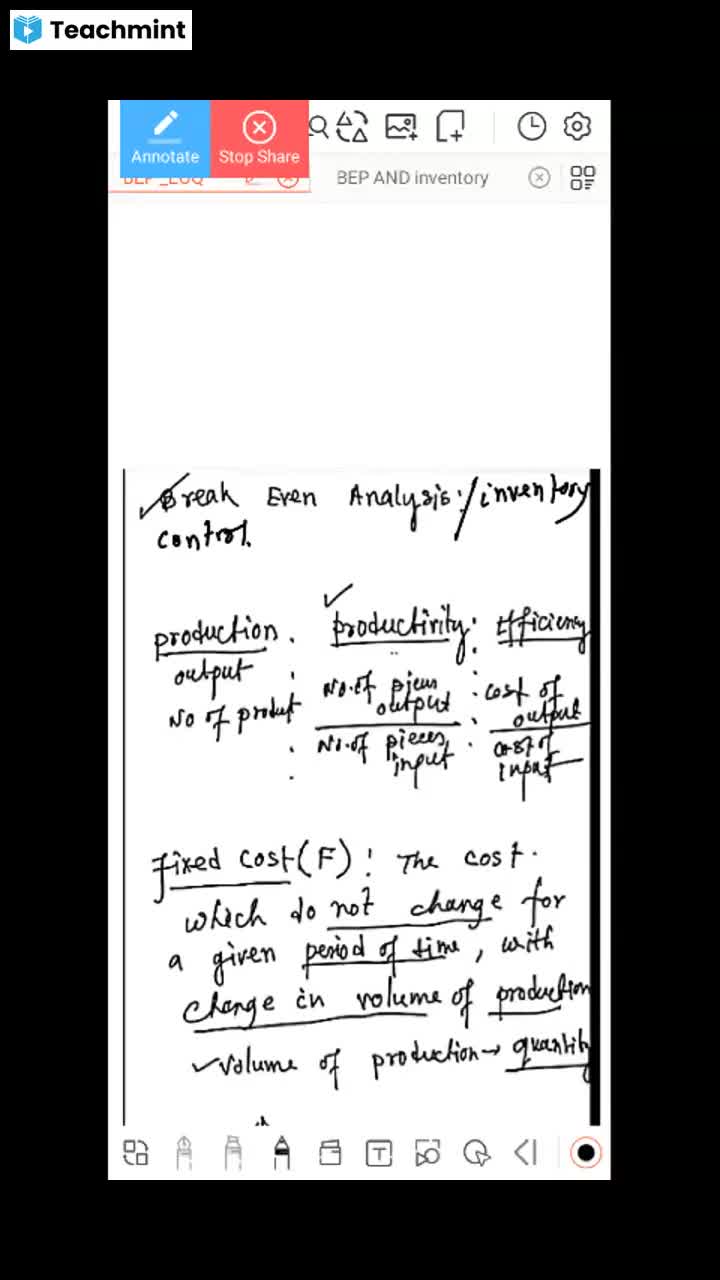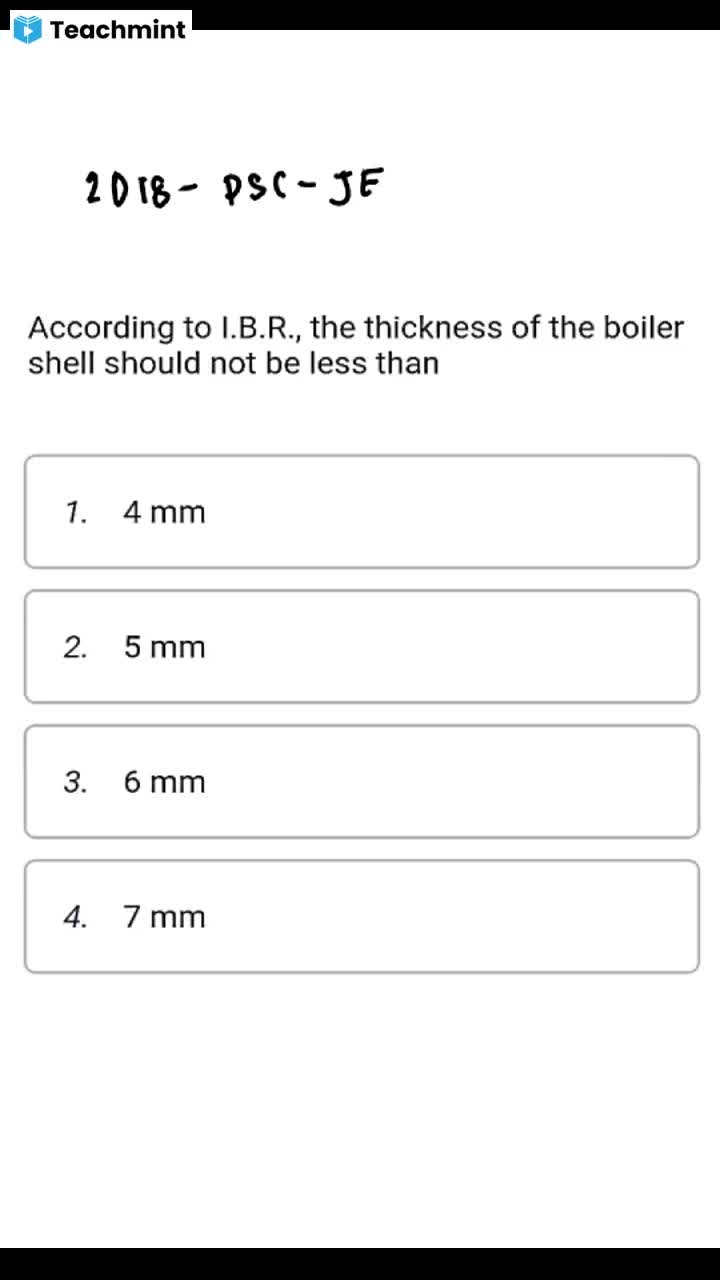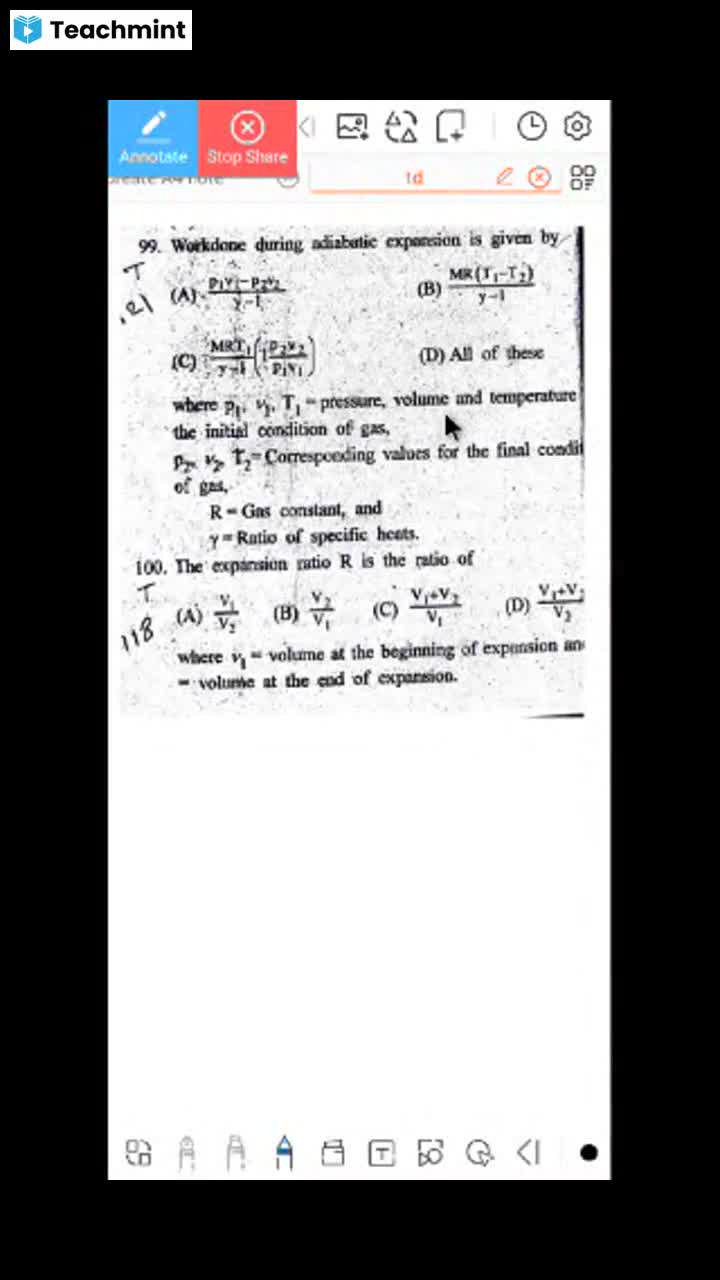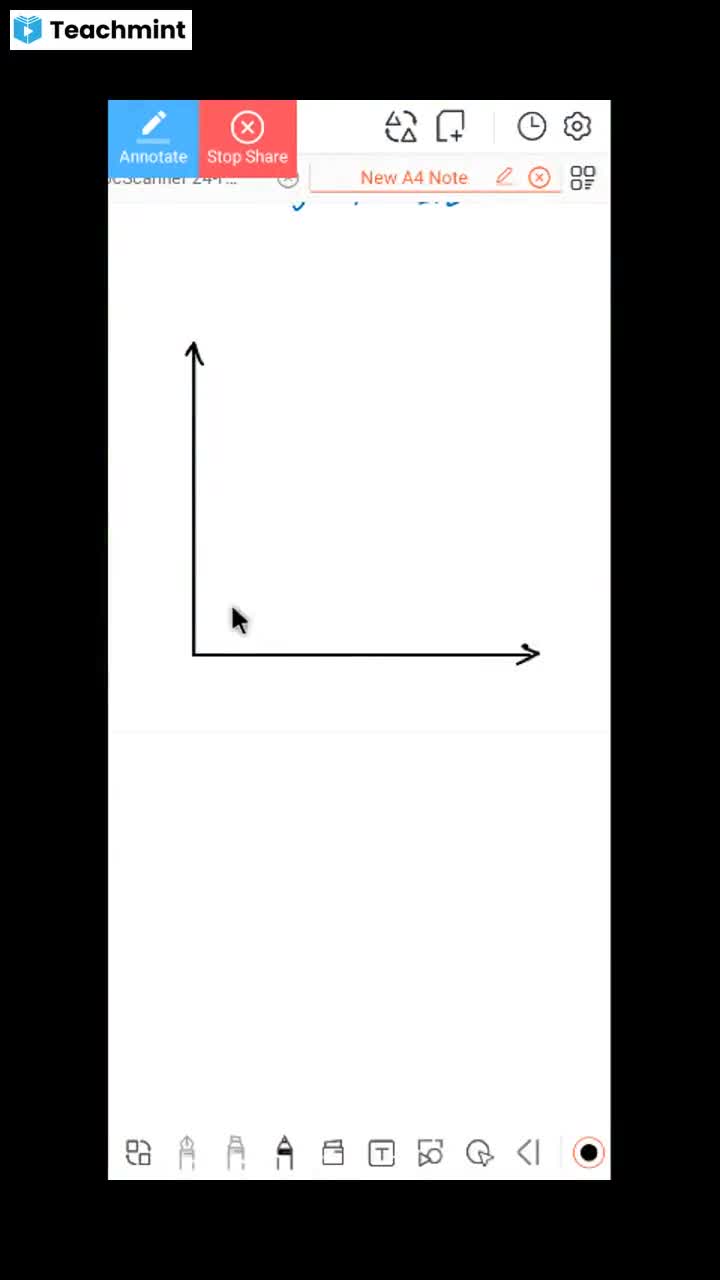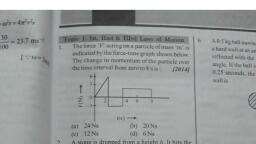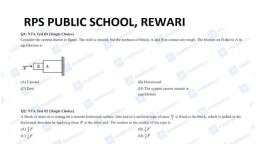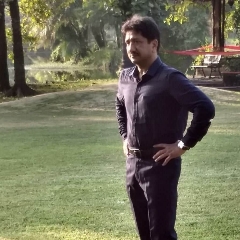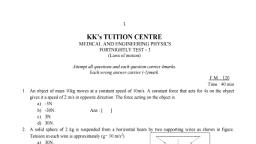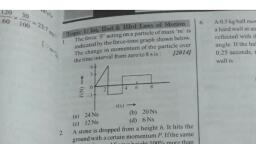Question 1 :
Assertion: Force on a body A by body B is equal and opposite to the force on the body B by A.
Reason: Force in nature always occur between pairs of bodies
Question 2 :
A $60$ kg man pushes a $40$ kg man by a force of $60$N. The $40$ kg man has pushed the other man with a force of?
Question 3 :
A person holding a rifle (mass of person and rifle together is 100 kg) stands on a smooth surface and fires 10 shots horizontal, in 2 s. Each bullet has a mass of 10 g with a muzzle velocity of $800{ ms }^{ -1 }.$ The final velocity acquired by the person and the average force exerted on the person are
Question 4 :
Assertion: A particle strikes head-on with another stationary particle such that the first particle comes to rest after collision. The collision should necessarily be elastic.
Reason: In elastic collision, there is a loss of momentum of the system of the particles.
Question 5 :
A vertical tank, open at the top, is filled with a liquid and rests on a smooth horizontal surface. A small hole is opened at the center of one side of the tank. The area of a cross-section of the tank is $N$ times the area of the hole, where $N$ is a large number. Neglect mass of the tank itself. The initial acceleration of the tank is:
Question 6 :
Less force is needed when applied at further distance from the pivoted point
Question 7 :
The earth and the moon are attracted to each other by gravitational force. Is the force with which the Earth attracts the Moon greater, smaller or the same as the force with which the Moon attracts the Earth?
Question 8 :
The force required to import yo a car a velocity of $30m/s$ in $10$ seconds starting from rest. The mass of the car is $1500 kg$:
Question 9 :
Assertion: The acceleration produced by a force in the motion of a body depends only upon its mass.
Reason: Larger is the mass of the body, lesser will be the acceleration produced.
Question 10 :
When a body is acted by a constant force, then which of the following quantities remain constant 
Question 11 :
Which of the following laws represents the qualitative measure of force?
Question 13 :
A bullet of mass $0.01 kg$ moving at a speed of $500 m/sec$, strikes a block of mass $2 kg$, suspended by a rope of length $5 m$. If the block rises to a height of $0.1 m$, then with what velocity does the bullet emerge from the block? <br>
Question 14 :
A rocket is propelled by a gas which is initially at a temperature of $4000 \ K$. The temperature of the gas falls to $1000 \ K$ as it leaves theexhaust nozzle. The gas which will acquire the largest momentum<br>while leaving the nozzle is
Question 15 :
The momentum of a body of given mass is proportional to its:
Question 16 :
A force vector applied on a mass is represented as $\vec F=6\hat i-8 \hat j+10 \hat k$ and accelerates with $1 m/s^2$. What will be the mass of the body?<br/>
Question 17 :
A member of fire-bridge spraying water at the rate of $30\ cm^{3}s^{-1}$ from the pipe of $1\ cm$ diameter to control the fire. What is the force of reaction acting on him?
Question 18 :
The horizontal force required to drag a wooden cube of a side a on a rough horizontal surface is $F$. Another cube of the same wood but of side $2a$ is dragged on the same surface. Then the force required, if the cube is dragged with constant speed in both the cases, is:
Question 19 :
Two solid rubber balls $A$ and $B$ having masses $200\ \&\ 400\ \text{gm}$ respectively are moving in opposite direction with velocity of $A$ equal to $0.3\ \text{m/sec}.$ After collision the two balls come to rest when the velocity of $B$ is :<br>
Question 20 :
In a tug-of-war between the teams A and B, therope breakes at a point which is nearer to A. Then<br><br>
Question 21 :
You are thrown outside when your car suddenly takes a turn. Which law of Newton is involved in this?<br/>
Question 22 :
A body moves with uniform speed along a straight line. So, it is acted upon by:
Question 23 :
If the unit of force is $1000$ $N$, the length is $1$ $km$ and time is $100$ $second$ then unit of mass will be:
Question 24 :
if an object experience a net zero unbalanced force, then the body
Question 25 :
A body of mass 5 kg moving with a speed of $ 3 ms^{-1}$collides head on with a body of mass 3 kg moving in the opposite direction at a speed of $2 ms^{-1}$. The first body stops after the collision. Find the final velocity of the second body.<br>
Question 26 :
A body is in equilibrium under the influence of a number of forces. Each force has a different line of action. The minimum number of forces required is :
Question 27 :
In which of the following cases the net force is not equal to zero?
Question 28 :
A block rests on the floor. Two forces act, one is downward gravitational force and second one is upward reaction force by the floor. These two forces:
Question 30 :
Write true or false for the following statements:<br>Impulse represents the rate of change of momentum of a body.
Question 31 :
Statement 1 : There can be displacement of an object even in the absence of any force acting on it.<br/>Statement 2 : An object in uniform motion in a straight line shows displacement even when the net force acting on it is zero.
Question 32 :
When a net force acts on an object, the object will beaccelerated in the direction of the force with an accelerationproportional to
Question 34 :
Assertion: The familiar equation mg = R for a body on a table is true only if the body is in equilibrium.
Reason: The equality of mg and R has no connection with the third law.
Question 36 :
A balloon of weight w is falling vertically downward with a constant acceleration a(<g).Th magnitude of the air resistance is:
Question 37 :
Who among the following anticipated Newton by declaring that all things gravitate to the earth?
Question 38 :
What is product of force and the time for which force act called?<br>
Question 39 :
The engine of a car produces an acceleration of $6 \ m/s^2$ in the car. If this car pulls a block of the same mass, then the acceleration would be:
Question 40 :
Assertion: In a 'tug-of-war' game, both teams exert a force on the other through the rope.
Reason: The team that pulls the rope harder wins.
Question 42 :
Assertion: The third law of motion concludes that the forces occur in pairs of action and reaction.
Reason: The action force is more than the reaction force.
Question 43 :
When an electron and a positron meet at low speed in empty space, they annihilate each other to produce two $0.511-MeV$ gamma rays. What law would be violated if they produced one gamma-ray with the energy of $1.02\, MeV$? 
Question 44 :
An athlete runs some distance before taking a long jump, because:
Question 45 :
Assertion: There is no cause-effect relation between action and reaction.
Reason: Action and reaction forces are not simultaneous forces.
Question 46 :
Assertion: Aeroplanes always fly at low altitudes.
Reason: According to Newton's Third law of motion, for every action there is an equal and opposite reaction.
Question 47 :
Assertion: A bullet is fired from a rifle. If the rifle recoils freely, the kinetic energy of rifle is more than that of the bullet.
Reason: In the case of rifle bullet system the law of<br>conservation of momentum violates.
Question 48 :
If a constant external force starts acting on a moving particle, then:<br/>
Question 49 :
There are three Newton's laws of motion namely first,second and third laws.We can derive 
Question 50 :
Newton's second and third law lead to which important law of physics?<br>

